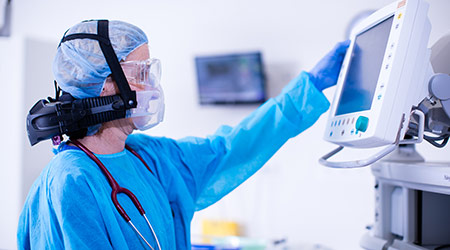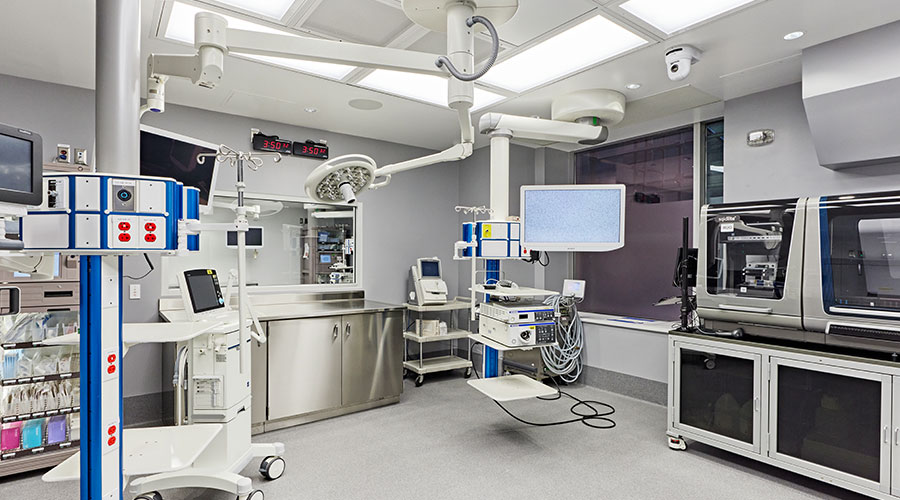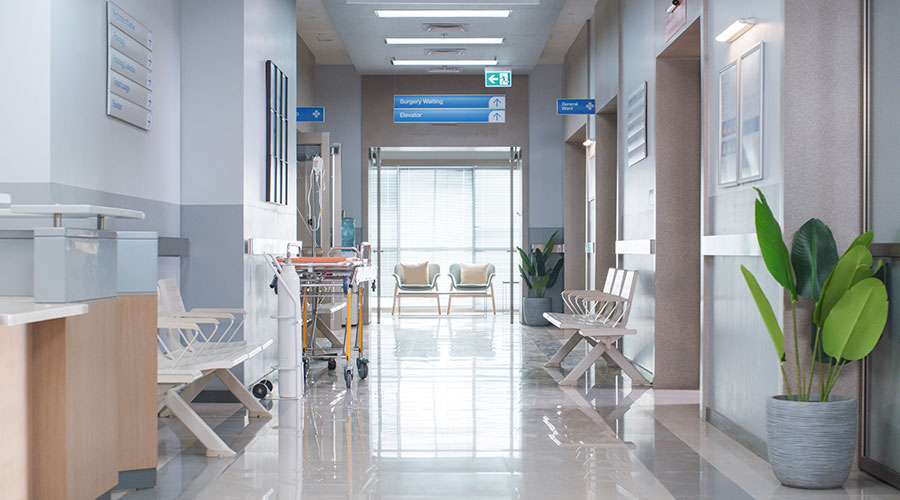Global forces are converging to create the conditions, on a scale unique in history, for a major respiratory pandemic. Few hospitals — let alone the broader responder community — are ready for the acute scale up of trained personnel and equipment required to manage and contain a respiratory pandemic. In such a global crisis, the initial phase will rely on the health and commitment of healthcare teams. Prioritizing the protection of healthcare workers can ensure a resilient frontline defense.
In recent years, airborne diseases like influenza, TB and measles have presented as global threats. Also, the emerging diseases (Ebola, MERS, H1N1 and SARS) with significantly higher infection rates and mortality rates have attracted high focus from the media and have triggered a review of the role of healthcare Personal Protective Equipment (PPE) in Pandemic Preparedness Plans.
Pandemic demands on the healthcare system
Prof. Raina MacIntyre, Professor of Global Biosecurity at Australia’s world-renowned Kirby Institute and head of the NHMRC Centre for Research Excellence, Integrated Systems for Epidemic Response (ISER) warns “Systemic weaknesses on the ground — whether through inadequate personal protective equipment (PPE), low level of training or limited stockpiles - will massively compound the problem for individual hospitals when a major outbreak happens.”
In such a health crisis, sudden increases in patient input create enormous strains on hospital resources. Healthcare systems and agencies may only have weeks to scale up to cope with significant numbers in patient triage and care and healthcare staff are working long hours with time pressures and equipment constraints. Hospitals have the added risk of staff exposure, infection and subsequent absenteeism. There are recorded incidents of high rates of infection and mortality amongst healthcare workers during a pandemic.
During a major outbreak, the demands on health systems are felt quickly, giving little time for hospital preparedness policies to be implemented and resources scaled up. This leaves existing resources to bear the brunt of the first waves of an outbreak.
Nationally, US federal planners expect the next pandemic to give rise to:[i]
- 45 million people in need of outpatient care
- 1 to 10 million requiring hospitalisation
- 130,000 to 1.5 million in need of intensive care
- 65,000 to 750,000 patients requiring mechanical ventilation
- Between 200,000 and 2 million deaths
“As infection control experts, our biggest concern during an epidemic is that we won’t have enough skilled staff, beds, medication and equipment on hand in a crisis, and that we won’t be able to provide care for everyone who needs it,” says Dr Cathryn Murphy, who was a consultant to the WHO infection control team working on preventing the spread of Severe Acute Respiratory Syndrome (SARS).
At a time when the health and commitment of healthcare teams are pivotal to management
and containment strategies, PPE plays a central role. Logically when dealing with respiratory
outbreaks, the focus is on the respiratory equipment.
“Globally, personal protective equipment that many hospitals hold may be outdated, inconsistently adopted and in short supply. This is a lethal combination to rely on in an acute, high-pressure, infectious situation,” cautions Prof. MacIntyre.
It has been calculated that up to 7.3 billion N95 masks would be needed to protect the 18 million[ii] healthcare workers in the US during a pandemic[iii]. Currently 60 million masks are stockpiled[iv] and there are no national guidelines for maintaining PPE stockpiles (e.g. temperature, humidity, UV exposure).
Powered systems (PAPRs) offer advantages over disposable masks (higher protection, re-usability and good user comfort), however, are only minimally used. The barriers for wide adoption of traditional PAPRs are the bulkiness, heavy weight and high complexity preventing a quick don, doff, clean and reprocess.
Respiratory PPE requirements
Prof. MacIntyre, who has led the largest body of international research on the use of respiratory protection by health care workers, has generated a body of important evidence that has been influential in informing guidelines on the use of PPE.
“Most clinical staff are trained in the use of PPE but this needs to be refreshed regularly. Using PPE, on a day-to-day basis helps staff become familiar with the equipment to improve adoption, correct use and compliance when the pressure is on“Hospitals and agencies need to review PPE accessibility and scale up; they must evaluate new equipment that increases comfort, protection and reusability,” she says
“Planners need to be mindful that tasks and responsibilities can quickly shift in a pressure situation and other clinical staff may take on an inherently riskier procedure than they’re use to, in place of a busy or absent colleague. So, all staff need to be trained and ready to don and doff PPE safely.” advises Prof. MacIntyre.
PPE recommendations from the experts
Healthcare providers and regulators at the 2018 International Respiratory Protection Conference outlined their specific requirements for respirators used in healthcare:
- Improve fit reliability
- Compatible with whole PPE ensemble
- Easily reprocessed
- Used for emergent and non-emergency situations
- Minimize negative PAPR aspects – less noise, light weight, no belt
Prof. MacIntyre’s research found healthcare workers are more comfortable in PAPRs than other passive respirators when worn for a long period.[v] She notes that, the fewer parts
PAPRs have, and the greater the simplicity of donning and doffing, leads to better adoption
and minimizes self-contamination. She feels PAPRs with a battery belt or hose may increase
the risk of self-contamination with doffing. In addition to reducing self-contamination risk, the fewer parts and smaller a device is, the less time it requires for disinfection and the quicker it can be put back into active service.
A new generation of respirators is now incorporating healthcare specific needs and
addressing limitations of traditional N95s and PAPRs. These are not iterative changes but offer a paradigm shift in respiratory protection. Advanced technologies can now deliver significant increases in performance with user comfort, ease of use and operating efficiencies to protect healthcare workers.
All the evidence points to the status quo being a dangerous set of circumstances. We aren’t
adopting new equipment quickly enough; vastly improved technology is there, it should
be evaluated and put into place as quickly as possible, to meet the threat head on,” Dr Cathryn Murphy says.
Complex factors are converging to increase the risk of a global respiratory disease outbreak. Both major and local hospitals, along with first responders, are a central component of preparedness planning. During a global outbreak, in responding, these organizations and their staff will be under extreme pressure. There are deep concerns from hospitals and specialists in the field of infection control that few hospitals are ready.
Successful outcomes depend on healthcare workers being protected using appropriate PPE they are familiar with and trained on. Due to issues with traditional respiratory protection there is a strong case for reviewing new protective respiratory technology. Adopting reusable systems for both daily use and in a health crisis, that meet the best-practice requirements identified by leading international infection control agencies, will significantly
increase the safety margin for healthcare staff. Such a focus would dramatically improve protection for healthcare workers to ensure they are able to work effectively and respond to contain respiratory disease outbreaks.
Accessed November 2018
articles/PMC4976391/. Accessed November 2018
Accessed November 2018
|
TOP TIPS FOR PPE AS PART OF YOUR PANDEMIC PREPARATIONS:
Organizations should regularly review their preparedness plans with a focus on worker protection
- Respect the microbial world. Serious respiratory diseases can travel quickly and do not discriminate. - Review new PPE and look at the cost effectiveness and advantages of reusable respirators. - Invest in approved PPE with high protection and ease of use. - Implement routine use and training to practice use, donning and doffing, correct disposal, cleaning and disinfection. Ensure staff are confident with their equipment when under pressure. - Ensure respiratory equipment is kept close to patient care, is easily available and ready to go. - Review protocols and planning for reusable equipment to incorporate savings in space, inventory, reduced waste and disposal, shortages and assured fit testing. - Follow international and local guidelines to ensure use of respirators during procedures with a high risk of aerosols e.g. intubation. - The use of tight fitting respirators, including N95s, require annual fit testing. Staff who gain or lose weight, grow or remove facial hair during this period require re-testing to check the face seal. Assoc. Prof. Cathryn Murphy |
Dr. Alex Birrell is CEO of CleanSpace Technology, a specialist in respirator design and a manufacturer of advanced personal respiratory protection in the healthcare industry.

 Building an Organ Regeneration Lab at UHN's Toronto General Hospital
Building an Organ Regeneration Lab at UHN's Toronto General Hospital Oracle Health Hit by Data Breach, Patient Data Possibly Compromised
Oracle Health Hit by Data Breach, Patient Data Possibly Compromised Ground Broken on New MD Anderson Sugar Land Facility
Ground Broken on New MD Anderson Sugar Land Facility Florida State University Reveals Plans for Panama City Beach Hospital
Florida State University Reveals Plans for Panama City Beach Hospital The Effect of Over-Cleaning on Human Health
The Effect of Over-Cleaning on Human Health